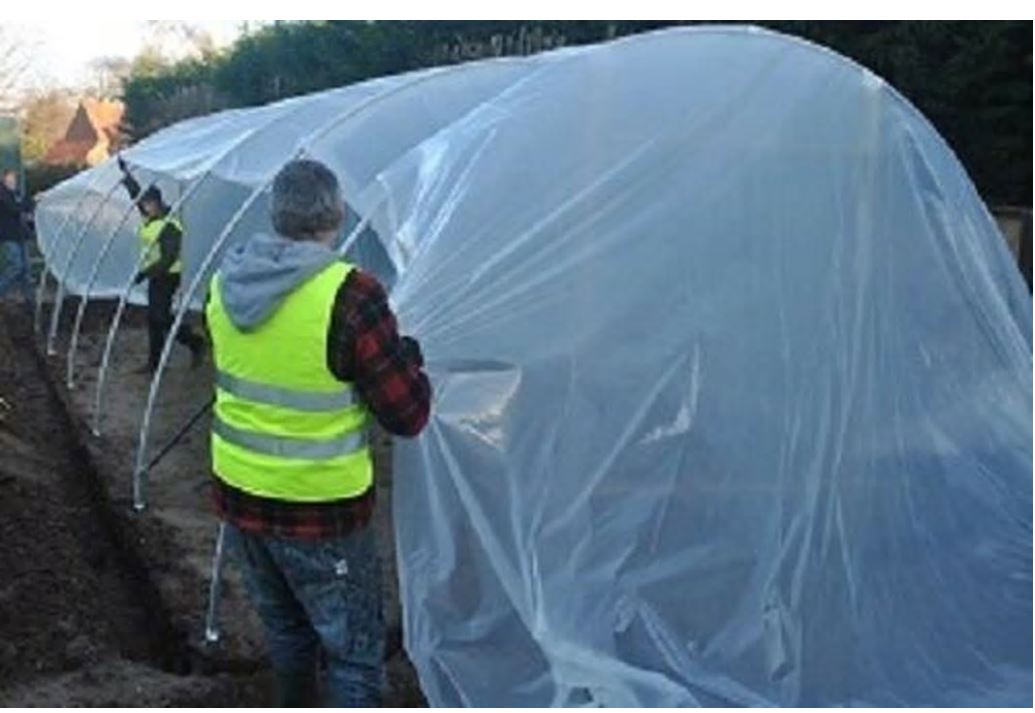Heating your polytunnel
20th Jun 2021
Paraffin, gas or electricity you have a few options when it comes to how you will heat your polytunnel. Those traditional methods aren’t always the best and there are alternatives which are equally if not more effective. But which is the most efficient, affordable and easy to use? We look at the choices and how they compare but also ask the question - do I need to heat my polytunnel?
In fact, let’s start with that.
Should I heat my polytunnel?
Many home gardeners will have a greenhouse or memories of parents and grandparents pottering around a small greenhouse at the bottom of the garden. It’s likely that a paraffin heater was used to keep the greenhouse warm in winter.
However, there is (literally) a big difference between a small greenhouse and a polytunnel. Although our polytunnels start at 10x12’ most polytunnels in gardens and on allotments will be larger. Sometimes much larger.
The size of a polytunnel can make it costly and impractical to heat. It’s just too large an area for most home gardeners to heat economically.
The key is to only heat the area that you need to. Whereas heating the full structure will be a drain on resources, heating a smaller area is more than possible. If you have plants you want to grow through winter, gather them together in as small an area as possible. That becomes the only area of the polytunnel you heat through the colder months.
Of course, if you’re not planning on any winter plant care then you don’t need to think about heating the tunnel.
Ways of heating your polytunnel
Horticultural bubble wrap
One of the easiest and most effective ways of heating a polytunnel is by using bubble wrap hung by string. This simple solution will block any cold draughts and retain heat within the planted area.
You do have to use horticultural bubble wrap as this is extra hard wearing and UV stabilised. You can also wrap your pots in this bubble wrap. It not only provides extra insulation it will prevent ceramic pots cracking when the temperature drops below zero.
Remember to also insulate the doors with bubble wrap too. This will help reduce draughts entering the tunnel.
Bubble wrap is a very affordable solution and far easier and more convenient than any of the traditional heating methods.
Light a candle
This one may be a surprise but lighting candles is a cheap and effective way to provide heat. For safety ‘plant’ the candles in soil within a pot. Candles provide a surprising amount of warmth - think how warm the living room gets at Christmas when you have all the candles lit.
Double insulation
If you have a mini-cloche or one of the small polythene tunnels you can use this as double insulation within your polytunnel. Cover plants with the cloche for very effective double glazing.
Horticultural fleece
You’re probably familiar with this and use it to wrap around vulnerable trees and plants in the garden. But you can also use it to great effect in your polytunnel. Layer it on soil, your cloches and mini-tunnels and use it to insulate the inside of the polythene cover. Remove it during the day and replace every night during a gold spell.
Traditional heating methods
Although impractical for large polytunnels you can use the traditional heating methods for small areas. Though you will seriously have to consider the potential costs.
Paraffin heaters are the heating source most of us are familiar with. Though its use seems to be declining now. Although fairly cheap to run they have to stay on all the time and certainly won’t be powerful enough to heat anything but a very small area.
Gas heaters can be expensive to purchase but their running costs are low. And, as they have thermostats, they can be controlled to reduce costs still further.
Electric heaters aren’t always practical as most of us don’t have electricity connected to their polytunnels. Even if you do have access to power, electric heaters are very expensive to run.
Heating your polytunnel
Heating a large polytunnel can be a tricky task but by only heating a proportion of the tunnel you make it a much easier job. On their own any of the methods discussed above will work well but try combining two or three for the best possible results.
Direct Polytunnels
If you’re looking for a replacement, new or additional polytunnel in sizes from 10 to 18-foot widths and lengths up to 66 feet buy from Direct Polytunnels. All our tunnels are manufactured by ourselves in our Norfolk workshops and are heavy duty commercial grade quality.
You may also be interested in: Buyers Guide Traditional Polytunnels Replacement Covers Commercial Polytunnels

